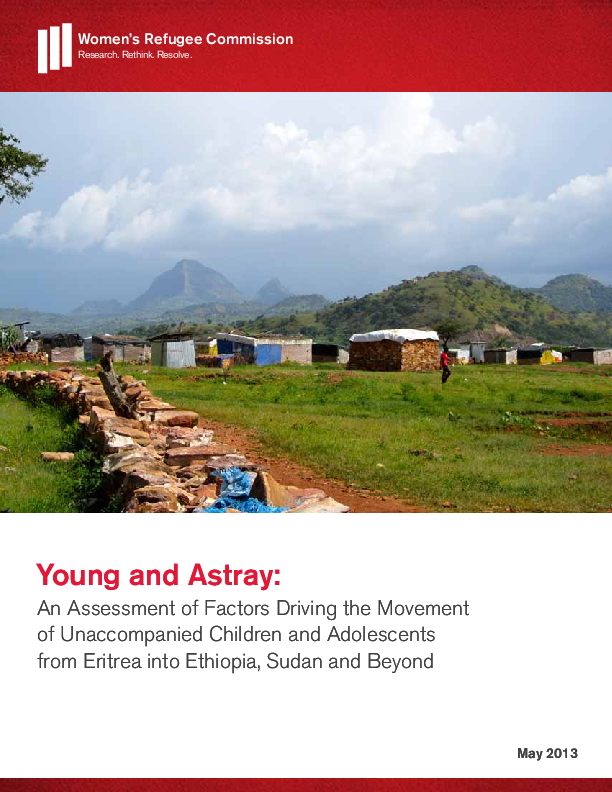
Reports, Study: Assessments, Study: Research
Young and Astray: An assessment of factors driving the movement of unaccompanied children and adolescents from Eritrea into Ethiopia, Sudan and beyond
Publication year:
2013
English
Format:
(1.1 MiB)
Publisher:
Women's Refugee Commission
For more than four decades, the northeast African state of Eritrea has faced complex challenges, including war, internal conflict, political resistance and prolonged economic strife. As a result, a significant number of Eritreans have left the country, either by choice or through force, and now live in host nations around the globe. The majority now represents individuals who have fled from the highlands of Eritrea, and move quickly on from eastern Sudan, rather than back into Eritrea. They are largely single, educated young adults, primarily between 16 and 30 years old. In recent years, an influx of younger children has sparked some concern, as children as young as 10 years old began to flee from their country into Ethiopia, Sudan and beyond. The new refugee population is heavily male dominated, though many young females also flee Eritrea for reasons much the same as the males.
The Women’s Refugee Commission, with the support of UNHCR, conducted research to assess the push and pull factors and protection risks faced by the Eritrean unaccompanied and separated children (UASC) seeking asylum in northern Ethiopia and eastern Sudan. The UASC in Mai-Aini refugee camp, northern Ethiopia, and Shagarab I refugee camp, eastern Sudan, articulated several key factors causing them to flee from their homes and cross international borders without the support or supervision of an adult guardian including fear of military conscription, lack of education, unemployment/economic burden, desire to join a family member in another country, hope for resettlement and, for some, the sheer excitement of adventure.
A significant number of Eritrean refugees, no matter their age, do not remain in the refugee camps but cross into Sudan or live outside the camps in Ethiopia. Some of those who stay in the camps seem to do so only as a last resort and a consequence of the ongoing economic stresses affecting their families. Various protection concerns were raised by the UASC living in the camps, including but not limited to: a real threat of kidnapping and forced abductions in Sudan; potential refoulement by the Sudanese government; and potential forced conscription by an Eritrean opposition movement in northern Ethiopia.
This report includes recommendations for UNHCR and its partners, including governments, to improve the situation of the UASC migrating from Eritrea.
Read full abstract
Authors
View & Download
Document information
Publisher
Authors
Content type
Region
Rights
© Author/Publisher
Found a mistake? Help us improve!
If you have noticed a document assigned to the wrong author or any other inaccuracies, let us know! Your feedback helps us keep our data accurate and useful for everyone.
Share
Link
